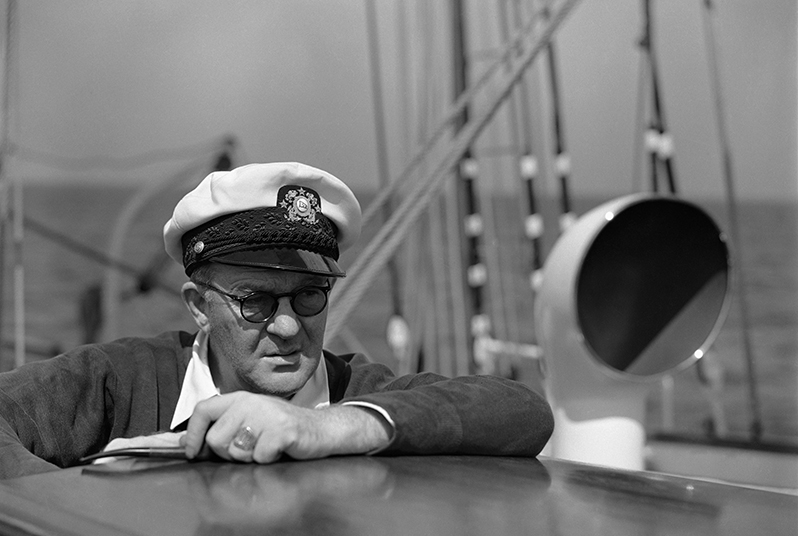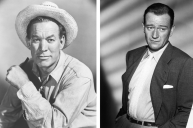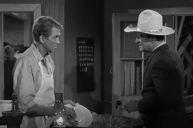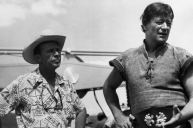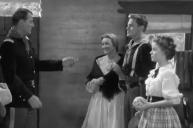As far as Hollywood titans go, there are few bigger than John Ford. The iconic American director is best known for his westerns, usually starring John Wayne. He is also the record holder for the most Academy Award wins for Best Director. He further distinguished himself as an incredible talent by filming The Battle of Midway and the Normandy Invasion at Omaha Beach on D-Day for the Navy during World War II.
Videos by Wide Open Country
Early Years
Born John Martin Feeney in Portland, Maine in 1894 to Irish immigrants John Augustine Feeney and Barbara "Abbey" Curran, Ford was one of 11 children. Ford was a successful high school football player at Portland High School, playing both fullback and defensive lineman. He was nicknamed "Bull" for the way he'd lower his head and charge in the game.
In 1914, Ford moved out to Hollywood and changed his name. He got his start in the film industry as his talented older brother Francis Ford's film assistant. But by 1917, he was directing his own films. Between 1917 and 1928 Ford directed a whopping sixty silent movies. Fittingly, Ford's first major hit was a story about the American West. The 1927 The Iron Horse told the story of the building of the transcontinental railroad. The production was ridiculously huge and expensive and shot on location in the Sierra Nevada. Though William Fox's studio was initially furious at how long and expensive the production was, the gamble on Ford paid off. The Iron Horse pulled in two million dollars and was one of the highest-grossing films of the decade.
Ford quickly became a star director for talkies as well. His 1939 film Stagecoach was considered one of the greatest westerns ever made and was also a major creative gamble for Ford, who insisted on casting some guy named John Wayne, despite the fact that no one wanted the unknown actor in the picture.
Stagecoach was a major hit. In 1940, Ford followed with another massive film achievement: The Grapes of Wrath, an adaptation of John Steinbeck's classic Depression-era novel. The film, starring Henry Fonda, is considered one of the greats of the era and won Ford a Best Director Oscar. Ford also put out pre-war hits like Young Mr. Lincoln, The Informant, The Long Voyage Home and Drums Along the Mohawk.
World War II
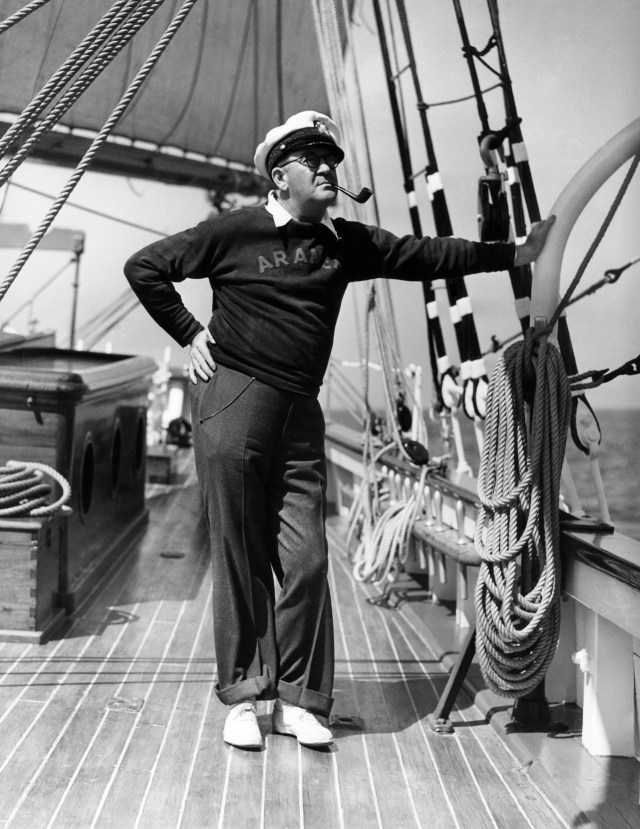
John Ford wearing sqilor cap standing on Yacht Jan. 1934 (AP Photo)
With the onset of World War II, Ford went into service for his country the best way he knew how: with a camera. Ford served as head of the photographic unit for the Office of Strategic Services (a precursor to the CIA) and shot documentaries for the Navy Department. Ford was also commissioned as a commander in the U.S. Navy Reserve.
The Battle of Midway, Ford's 1942 documentary, won the Academy Award for Best Documentary. Ford's propaganda film December 7th: The Movie also won an Oscar for Best Documentary Short Subject.
Read More: Sam Elliott Gives Moving Memorial Day Tribute to WWII Hero Sgt. Ray Lambert
Ford was actually wounded while filming the Battle of Midway and he put himself in serious danger again while filming the American landings at Omaha Beach on D-Day, though Ford's harrowing, up-close footage of that vicious battle was never shown to the public. In 2000, TIME reported that World War II aviator Melvyn R. Paisley unearthed a portion of the missing film. Along with more raw footage from the war, Ford's film is featured in the documentary Shooting War, narrated by Tom Hanks.
Ford was ultimately promoted to Rear Admiral in the U.S. Navy Reserve. The final war film directed by John Ford, They Were Expendable, was a Philippines- set drama about the Japanese invasion of the islands in 1940.
After the war, Ford got back into civilian film life. Though the film director was mostly known for westerns that teamed him with John Wayne such as The Searchers, Rio Grande, Fort Apache, Cheyenne Autumn, The Man Who Shot Liberty Valance (starring both John Wayne and James Stewart) and She Wore a Yellow Ribbon, Ford also teamed up with other stars of the era to make both westerns, such as My Darling Clementine with Henry Fonda, and non-western hits like Mister Roberts and the Ireland-set motion picture The Quiet Man, which saw Ford celebrate some of his Irish roots. He also made waves with his political film The Last Hurrah, starring James Cagney. The Quiet Man would earn him his last Best Director Academy Award, along with How Green Was My Valley and The Informer.
Presidential Medal of Freedom
From the 1960s on, Ford's health began to decline. Years of heavy drinking and smoking, along with the wounds he suffered at Midway, made working difficult. In 1970, he broke his hip and was confined to a wheelchair. Sensing that the legendary director may not have long, Hollywood lined up to honor him. The Screen Director's Guild staged a tribute to Ford in 1972 and the American Film Institute gave him a lifetime achievement award in 1973. The ceremony was telecast nationwide and culminated in then-President Richard Nixon presenting Ford with the Presidential Medal of Freedom and promoting Ford to full admiral.
Ford died on August 31, 1973, and was interred at Holy Cross Cemetary in Culver City, California. To this day, however, his filmmaking legacy lives on as one of the greatest film directors of all time.
Now Watch: Meet Clint Eastwood's 8 Children
https://rumble.com/embed/u7gve.v71i5p/
